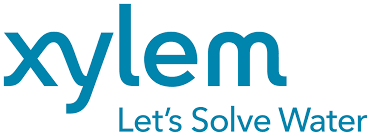New White Paper on EU Pump Efficiency Regulations

As featured on Impeller | Water News from Xylem
As the EU seeks to become the most climate friendly region in the world, it is continuously introducing new regulations that place ever-stricter demands on CO2 emissions and the environmental design of energy-using products. As a leading supplier of pumps for the construction sector, Xylem has created a new white paper to help customers understand the complex regulatory landscape.
Improving energy efficiency is a major focal area for the global construction market and, in the European Union (EU), in particular. The reason is clear: 40 percent of EU energy demand is consumed in buildings, and 50 percent of that is used in commercial buildings, accounting for more energy than the manufacturing industry and transport combined. As green buildings become the rule rather than the exception, energy efficiency is more and more crucial to those seeking green building certification.
Stricter efficiency standards for equipment
The focus on energy efficiency extends to commercial building equipment, including motors, pumps and HVAC system circulator pumps. EU governments have set progressively stricter efficiency standards for these items under the ErP (Energy-related Products) Directive.
Only products that comply are allowed to carry the Conformité Européenne (CE) mark and to be sold within the EU. Building designers and owners who use these products stand to reduce their energy usage and carbon footprint.
White paper: a comprehensive overview of regulations
In its new white paper, Xylem has created a comprehensive overview of the latest regulations governing motors, pumps and HVAC system circulator pumps. It also identifies the most probable future course for these directives in the coming years.
“The regulations are constantly evolving, and keeping up with them can be quite a challenge,” explains the author of the white paper, Giorgio Sabbatini, Global Business Unit Director, Commercial Building Services & HVAC, AWS at Xylem.
Pumps are among the most critical components in a commercial building. They are responsible for bringing water into the building, for heating and cooling it, and for getting wastewater out. An average commercial building contains about 15 to 30 pumps, with an installed power base of between 50 and 100 KW.
Significant savings in high-efficiency pumps
With this amount of energy dedicated to pumping, it comes as no surprise that the EU is enforcing ever-stricter legislation to govern the energy efficiency of these components, as part of its drive to reduce energy consumption and carbon footprint.
“Staying on top of the regulations is not only crucial from a legal compliance perspective,” continues Sabbatini. “With pumps accounting for such a large proportion of the energy costs of a building, there are significant savings to be made for those who make the transition to high-efficiency pumps.”
A low-carbon economy by 2050
It is the stated objective of the EU to transition to a low-carbon economy by 2050. As part of this, the EU has committed to achieving the following by 2020:
- 20 percent emissions reduction from 1990 levels, moving to 30 percent reduction if conditions are right.
- 20 percent greater energy efficiency.
- 20 percent renewables in the energy mix.
The ErP Directive, which contains a set of rules related to the ecodesign of energy-related products, has an important part to play in achieving the EU’s challenging targets. The objective of the provisions contained within the ErP Directive is to reduce energy consumption by 12 percent from the 2007 level, amounting to a total saving of 341 terawatt-hours, or 341 billion kilowatt-hours, by 2020.
Explaining provisions related to the pump industry
The white paper covers the three provisions of the ErP Directive that relate specifically to the pump industry. They are:
- 640/2009 and 4/2014: Ecodesign requirements for electric motors.
- 641/2009 and 622/2012: Ecodesign requirements for glandless stand-alone circulators and glandless circulators integrated in products.
- 547/2012: Ecodesign requirements for water pumps.
Sabbatini explains that for those contractors who question the need for the kind of high-efficiency equipment required by the ErP Directive, the arguments in favor are incontrovertible.
“A high-efficiency motor may cost more than a conventional one but the economic case speaks for itself,” he says. “If you increase the efficiency of a 5.5 KW motor by three percent, your return on investment is 30 months, even with the 15 percent higher cost of buying the component. After only 2.5 years, you start to save money on a part that has an average lifespan of 10 to 20 years. And last, but not least, it’s mandatory.”
Download the white paper:
Understanding EU Pump Efficiency Regulations

